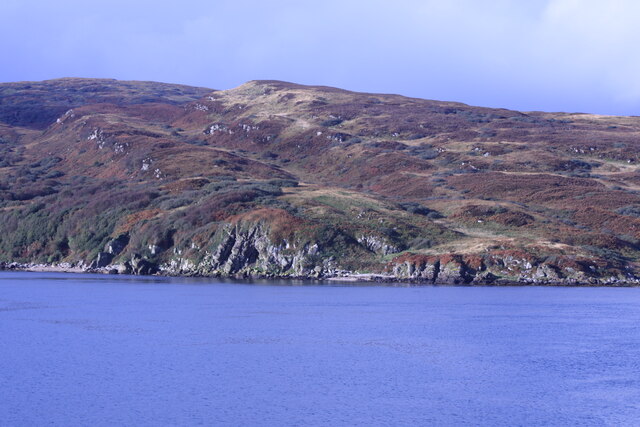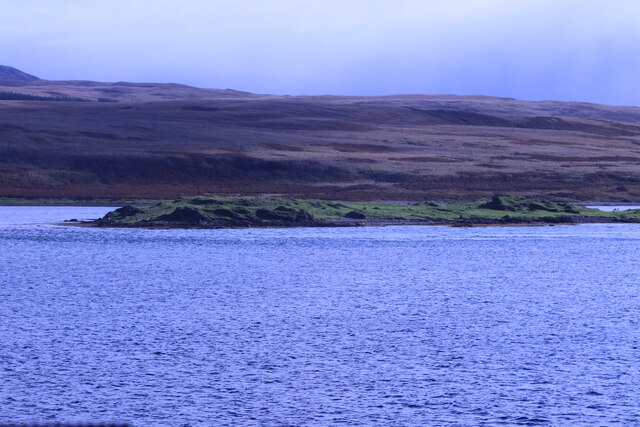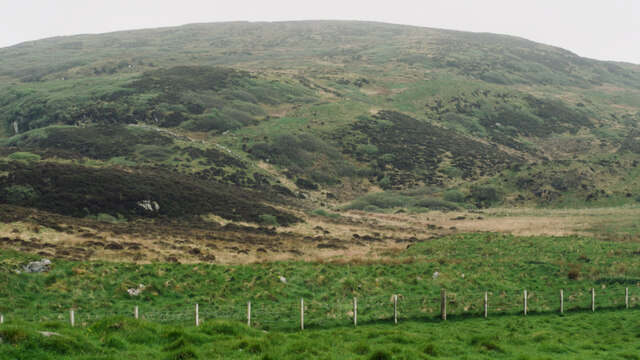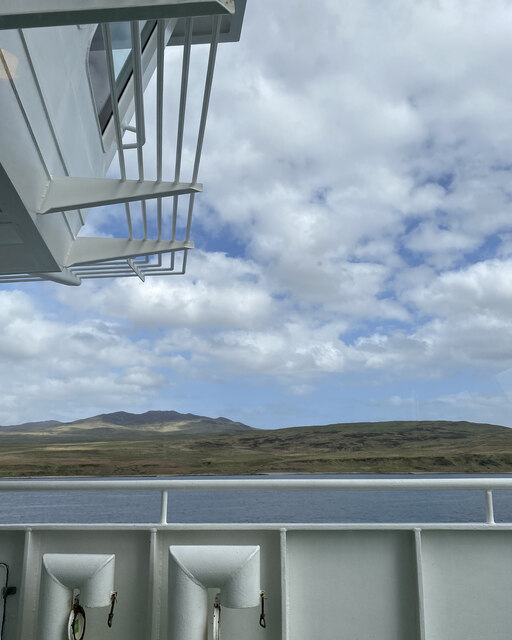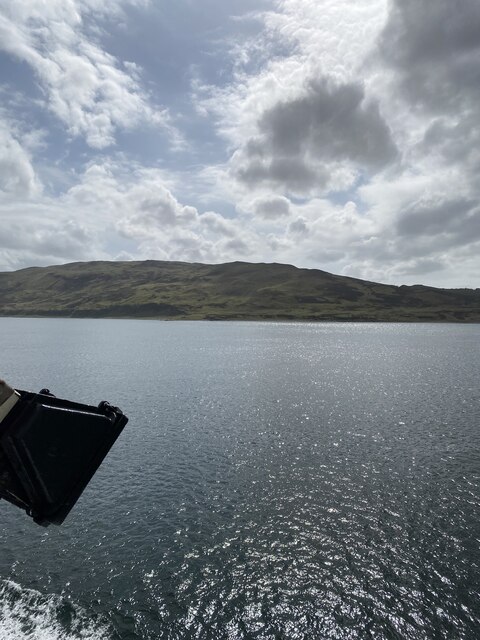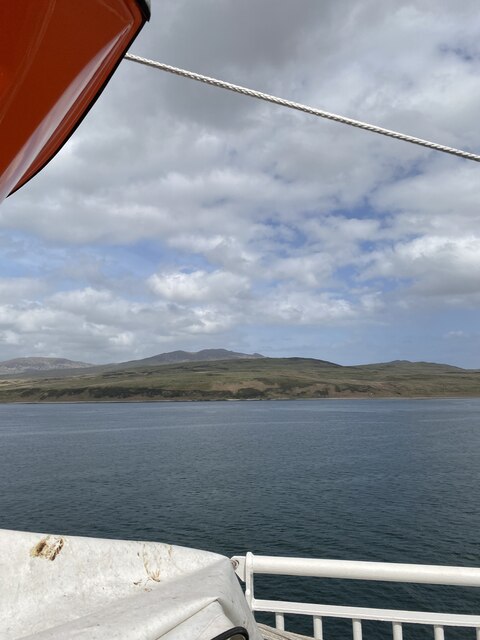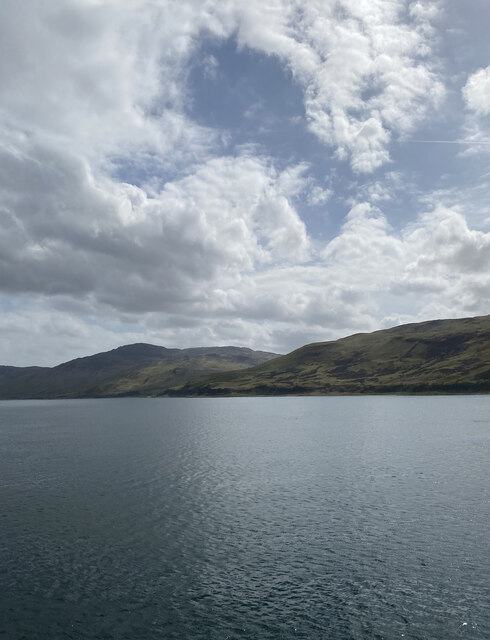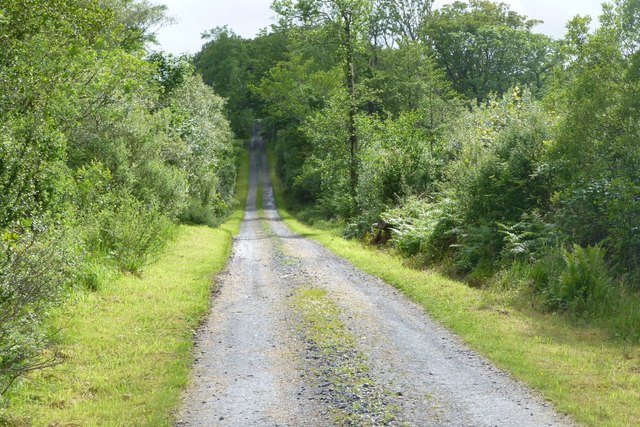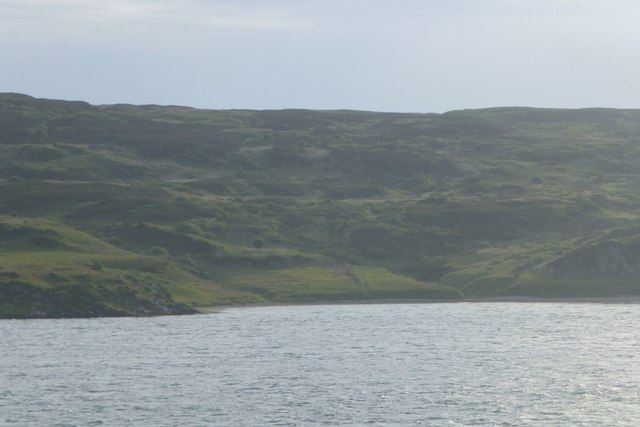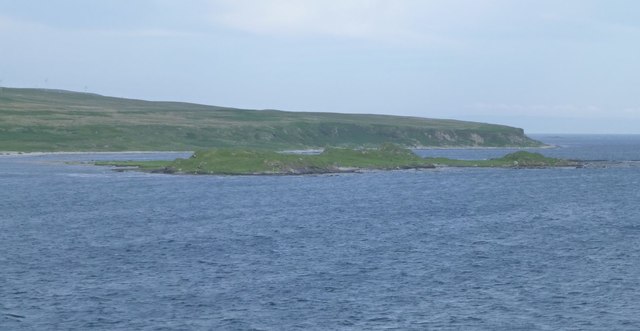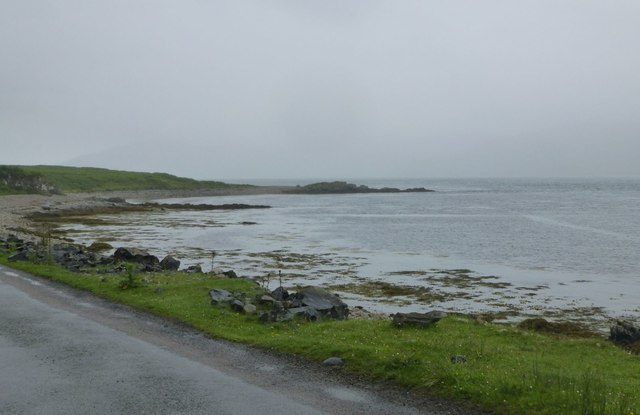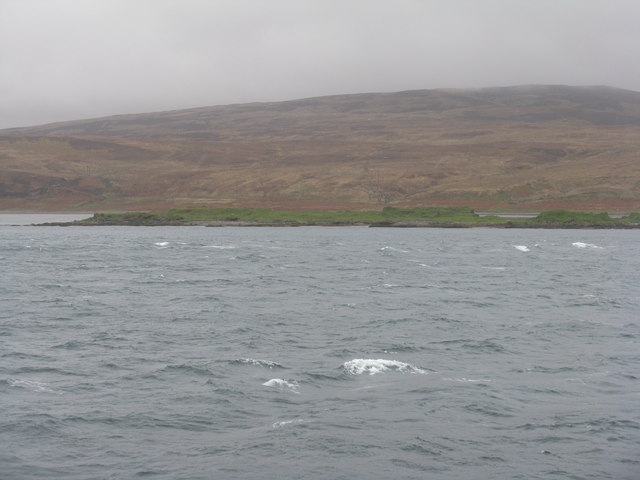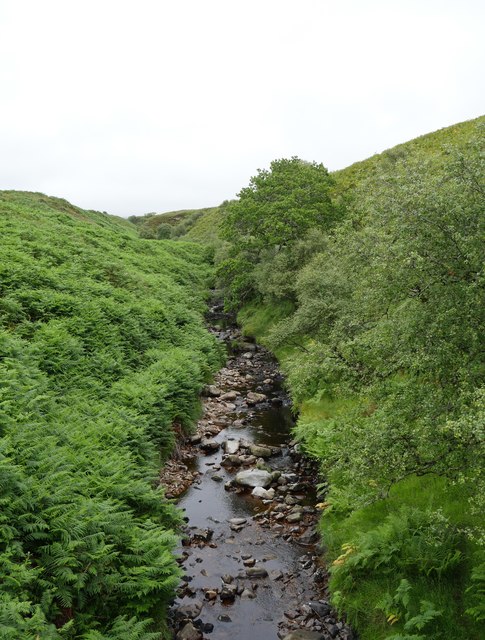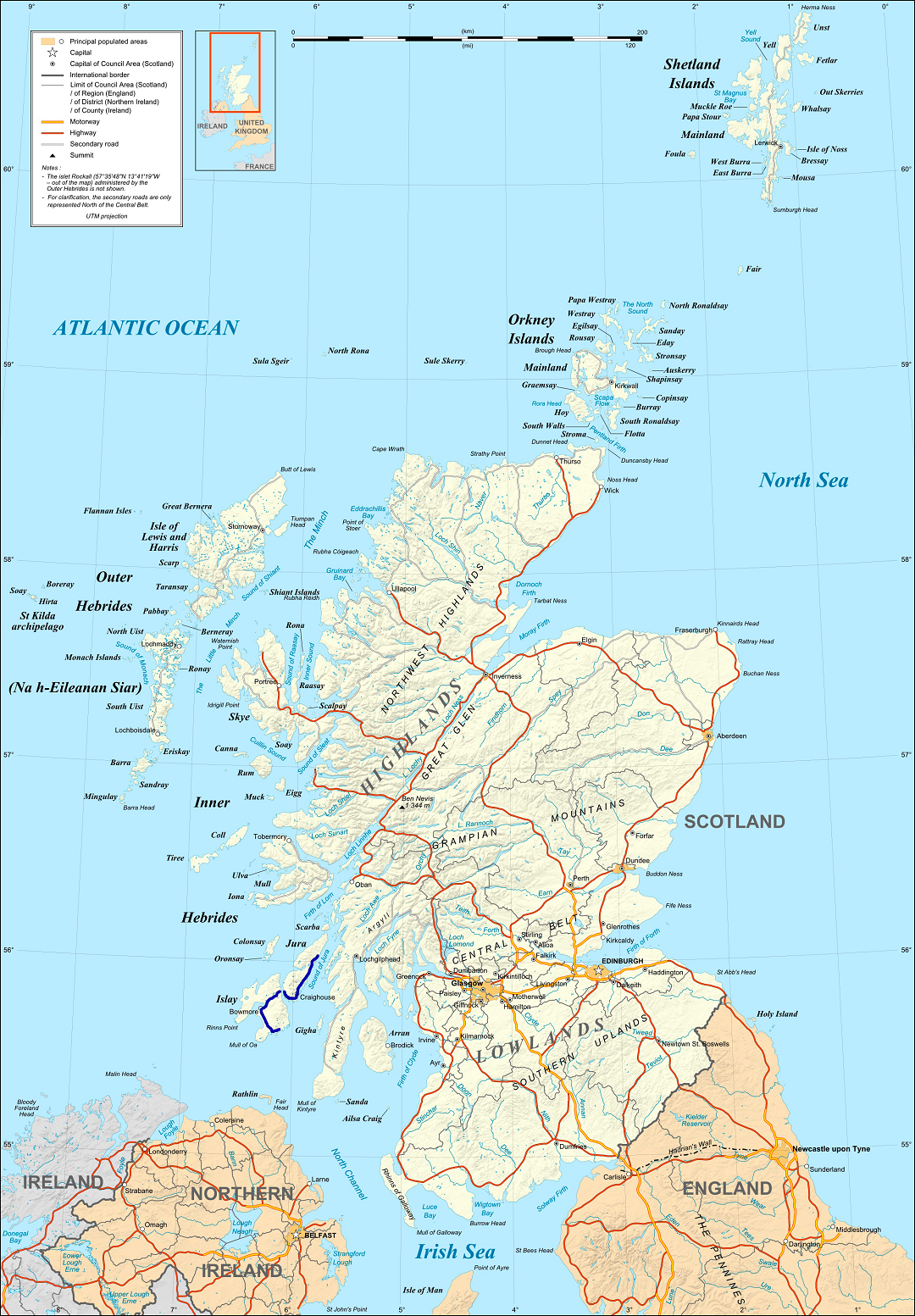Carraig Fhada
Coastal Feature, Headland, Point in Argyllshire
Scotland
Carraig Fhada
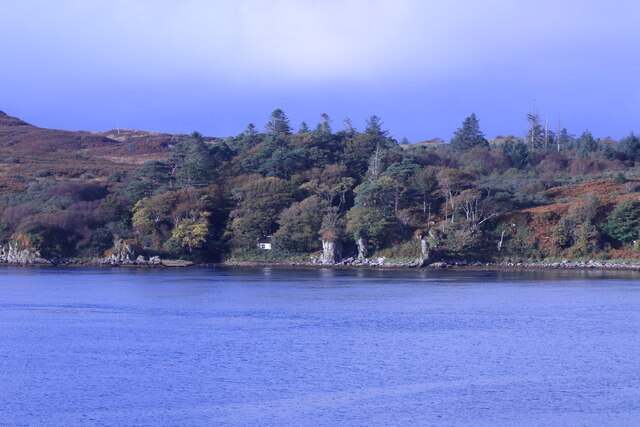
Carraig Fhada is a prominent coastal feature located in Argyllshire, Scotland. It is a captivating headland that juts out into the Atlantic Ocean, forming a distinctive point along the rugged coastline. The name "Carraig Fhada" translates to "long rock" in Gaelic, which aptly describes the elongated shape of the headland.
Situated in a remote and unspoiled area, Carraig Fhada offers breathtaking views of the surrounding landscape. The headland is characterized by towering cliffs that drop dramatically into the sea, creating a stunning backdrop against the crashing waves. These cliffs provide nesting sites for a variety of seabirds, including puffins, guillemots, and razorbills, making it a popular spot for birdwatchers.
Carraig Fhada is also home to a diverse range of marine life. The surrounding waters are teeming with fish, and seals can often be spotted basking on the rocks or swimming close to the shore. The headland's rocky beaches are a treasure trove for beachcombers, as they are scattered with interesting shells, pebbles, and other marine artifacts.
Access to Carraig Fhada is relatively easy, with a well-maintained footpath leading from the nearby village. The headland is a favored spot for hikers and nature enthusiasts, who can explore the area and enjoy the stunning views along the coastal trail.
Overall, Carraig Fhada is a remarkable coastal feature that showcases the raw beauty of Scotland's coastline. Its majestic cliffs, diverse wildlife, and picturesque surroundings make it a must-visit destination for anyone seeking a true Scottish coastal experience.
If you have any feedback on the listing, please let us know in the comments section below.
Carraig Fhada Images
Images are sourced within 2km of 55.817977/-6.1044896 or Grid Reference NR4265. Thanks to Geograph Open Source API. All images are credited.
![Building (Period Unassigned) Not sure is recorded for this pair of ruins. For further info. see Canmore.org.uk. Islay, Kilslevan | Canmore. Available online at: <span class="nowrap"><a title="https://canmore.org.uk/site/155645/islay-kilslevan" rel="nofollow ugc noopener" href="https://canmore.org.uk/site/155645/islay-kilslevan">Link</a><img style="margin-left:2px;" alt="External link" title="External link - shift click to open in new window" src="https://s1.geograph.org.uk/img/external.png" width="10" height="10"/></span> [Accessed 29 May 2022].](https://s1.geograph.org.uk/geophotos/07/18/55/7185525_f2eb2f38.jpg)
![Building (Period Unassigned) Not sure is recorded for this pair of ruins. For further info. see Canmore.org.uk. Islay, Kilslevan | Canmore. Available online at: <span class="nowrap"><a title="https://canmore.org.uk/site/155645/islay-kilslevan" rel="nofollow ugc noopener" href="https://canmore.org.uk/site/155645/islay-kilslevan">Link</a><img style="margin-left:2px;" alt="External link" title="External link - shift click to open in new window" src="https://s1.geograph.org.uk/img/external.png" width="10" height="10"/></span> [Accessed 29 May 2022].](https://s2.geograph.org.uk/geophotos/07/18/55/7185538_ab35b0f3.jpg)
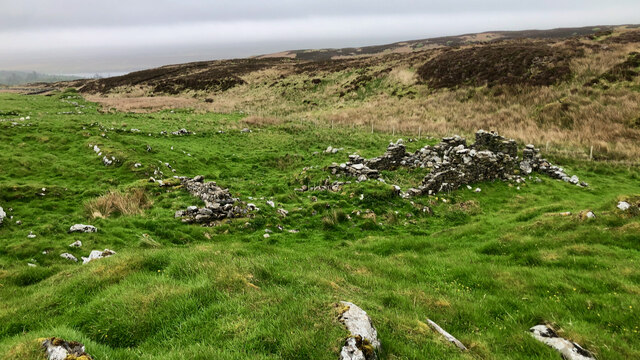
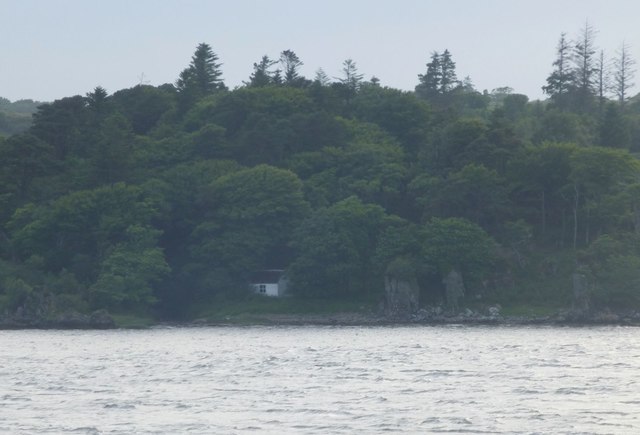
Carraig Fhada is located at Grid Ref: NR4265 (Lat: 55.817977, Lng: -6.1044896)
Unitary Authority: Argyll and Bute
Police Authority: Argyll and West Dunbartonshire
What 3 Words
///pillow.fortnight.pound. Near Ballygrant, Argyll & Bute
Nearby Locations
Related Wikis
A846 road
The A846 road is one of the two principal roads of Islay in the Inner Hebrides off the west coast of mainland Scotland and the only 'A' road on the neighbouring...
Dunlossit House
Dunlossit House is a Category C listed country house near Port Askaig, Islay in the county of Argyll, in western Scotland.. == History and architecture... ==
Port Askaig
Port Askaig (Scottish Gaelic: Port Asgaig) is a port village on the east coast of the island of Islay, in Scotland. The village lies on the Sound of Islay...
Ballygrant
Ballygrant (Scottish Gaelic: Baile a' Ghràna) is a small village on the Inner Hebrides island of Islay of the western coast of Scotland. The village is...
Sound of Islay
The Sound of Islay (Scottish Gaelic: Caol Ìle) is a narrow strait between the islands of Islay and Jura off the west coast of Scotland. It is about 30...
Feolin
Feolin (also known as Feolin Ferry) is a slipway on the west coast of Jura. MV Eilean Dhiura provides a vehicle and passenger ferry service from Port Askaig...
Caol Ila distillery
Caol Ila distillery (; Scottish Gaelic: Taigh-staile Chaol Ìle [t̪ʰəˈs̪t̪alə xɯːlˈiːlə], "Sound of Islay Distillery") is a Scotch whisky distillery near...
Dun Guaidhre
Dun Guaidhre, also known as Dùn Ghùaidhre, is an Iron Age fort southwest of Kilmeny, Islay, Scotland. It is protected as a scheduled monument.Local tradition...
Have you been to Carraig Fhada?
Leave your review of Carraig Fhada below (or comments, questions and feedback).
